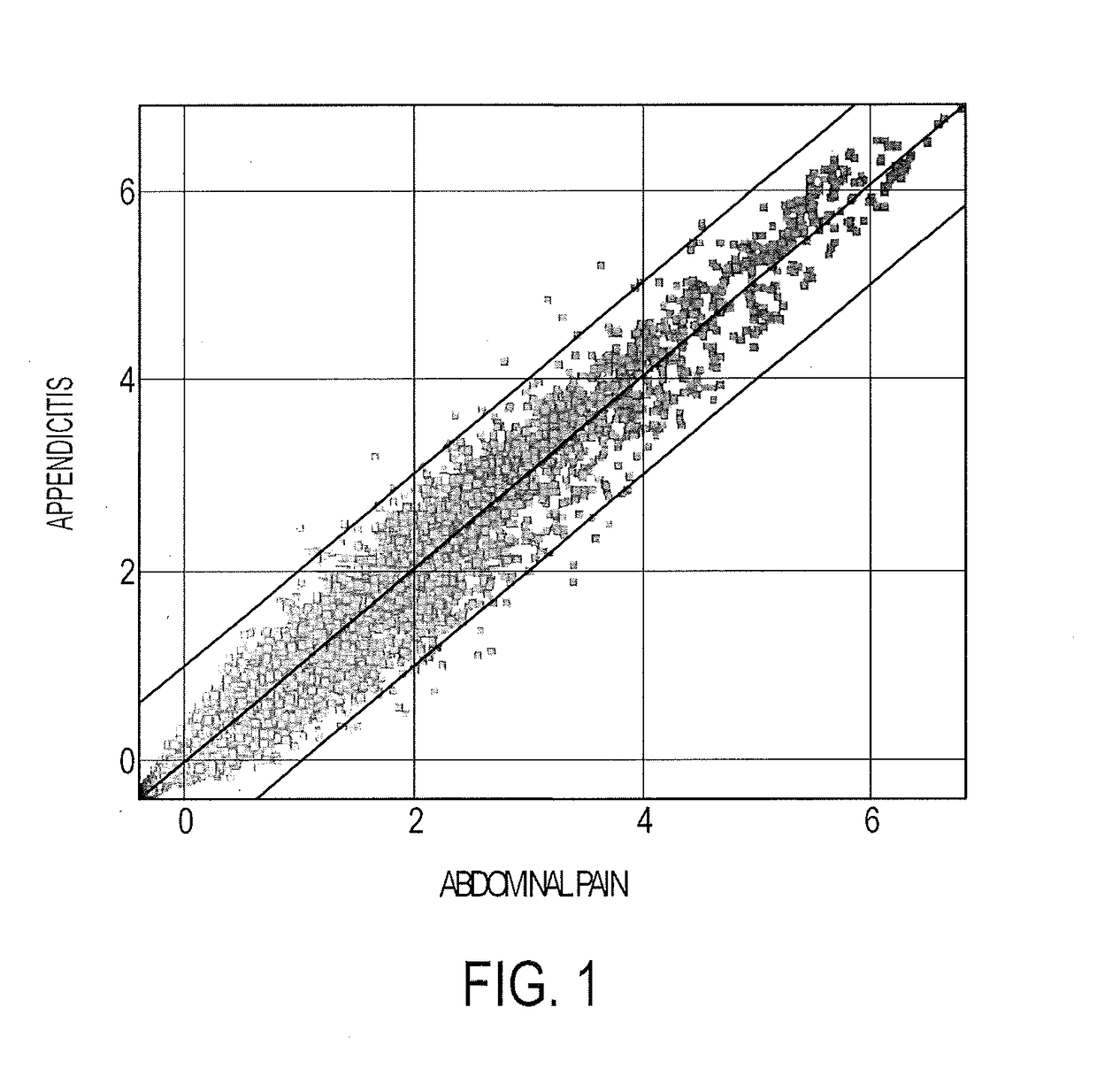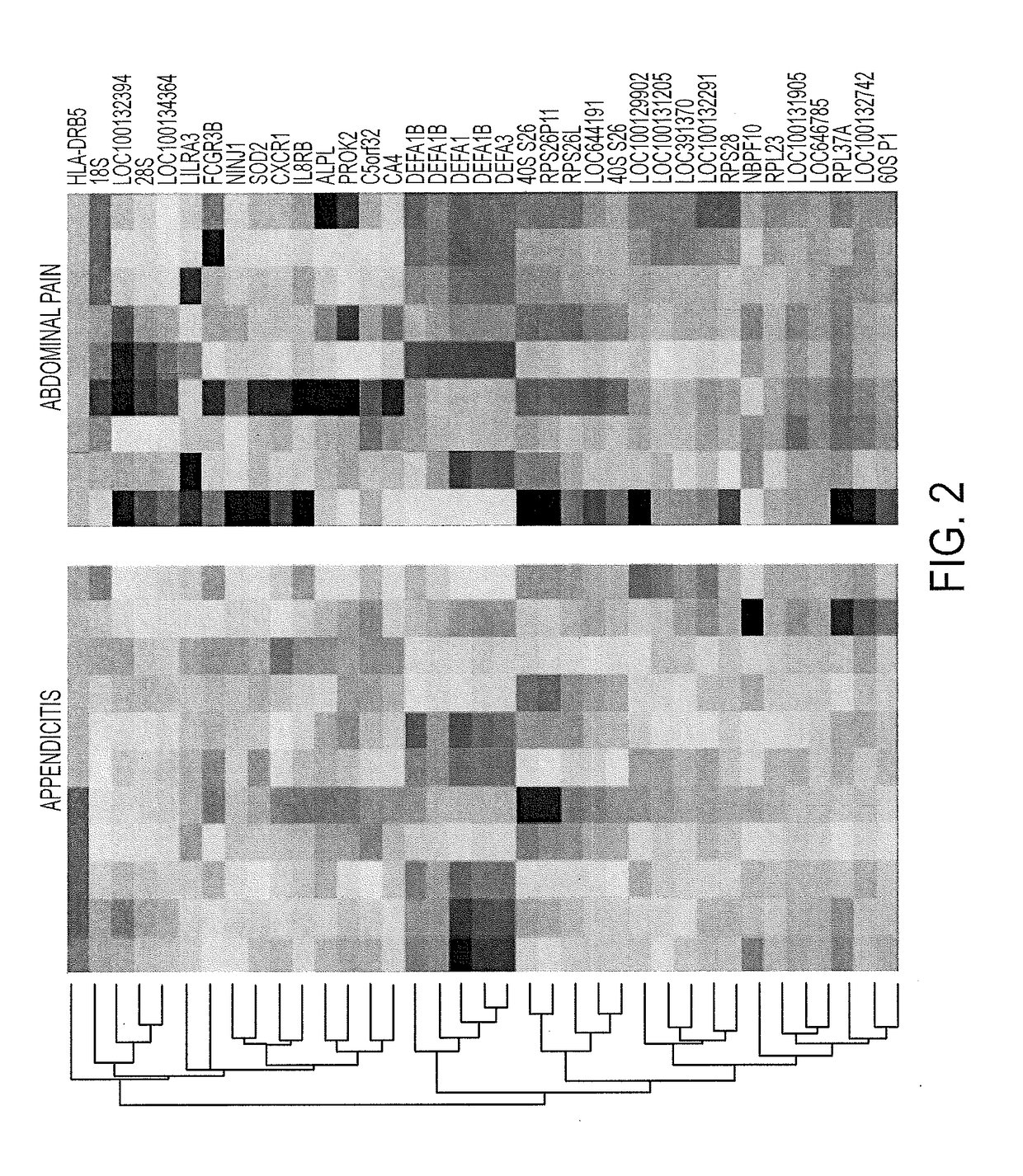Blood biomarkers for appendicitis and diagnostics methods using biomarkers
a biomarker and appendicitis technology, applied in the field of abdominal discomfort/pain assessment and treatment, can solve the problems of increasing the risk of developing a future malignancy, comparing appendicitis and other abdominal abnormalities, and increasing the risk of appendicitis
- Summary
- Abstract
- Description
- Claims
- Application Information
AI Technical Summary
Benefits of technology
Problems solved by technology
Method used
Image
Examples
example 1
Acute Appendicitis: Transcript Profiling of Blood Identifies Promising Biomarkers and Potential Underlying Processes
[0076]Materials and Methods
[0077]Subjects.
[0078]Ethics statement: The protocol of this observational study was approved by the Institutional Review Board of The George Washington University, and all subjects gave informed consent. From a cohort of 270 patients presenting to the ED for various reasons, a subset of 40 subjects with a principal complaint of abdominal pain, and who met inclusionlexclusion criteria, were identified, and divided into a discovery set of 20 patients, and a validation set of 20 patients for transcript profiling of whole blood RNA by microarray.
[0079]Discovery Set: For the discovery set, we employed 20 subjects who presented to the ED who were undergoing CT scanning. In order to meet criteria, the patient undergoing the CT scan must have had appendicitis suspected in the differential diagnosis. Appendicitis Patients: Patients with appendicitis w...
example 2
Confirmation of Microarray Results
[0167]Quantitative Real Time Polymerase Chain Reaction (Q-RTPCR) was sued to confirm the microarray results from Example 1. FIG. 7 shows Q-RTPCR results for 3 genes: ALPL, DEFA1 / 3 and IL8RB. As seen in FIG. 7, results obtained from Q-RTPCR parallel the results obtained from the microarray assays.
[0168]Methods
[0169]1) RNA Purification:
[0170]1.1) For validation studies, the RNA purified for microarray analysis was used. In new samples, or other embodiments, the sample of blood must be collected in an appropriate RNA stabilizer. In the present studies, Tempus tubes were used. Other stabilizers could be used, but it is possible that the specific transcripts levels of expression or their magnitude, could be different depending upon the RNA Blood tubes used and their RNA stabilizers. From the Tempus tubes, the manufacturer's instruction and reagents for column purification of RNA was used. However, technically, both DNA and RNA are purified.
[0171]2) DNAse...
PUM
| Property | Measurement | Unit |
|---|---|---|
| volume | aaaaa | aaaaa |
| volume | aaaaa | aaaaa |
| Tm | aaaaa | aaaaa |
Abstract
Description
Claims
Application Information
 Login to View More
Login to View More - R&D
- Intellectual Property
- Life Sciences
- Materials
- Tech Scout
- Unparalleled Data Quality
- Higher Quality Content
- 60% Fewer Hallucinations
Browse by: Latest US Patents, China's latest patents, Technical Efficacy Thesaurus, Application Domain, Technology Topic, Popular Technical Reports.
© 2025 PatSnap. All rights reserved.Legal|Privacy policy|Modern Slavery Act Transparency Statement|Sitemap|About US| Contact US: help@patsnap.com



